The Rebel Princess (上阳赋, Shang Yang Fu) is a recent Chinese fictional costume drama that receives more attention, based on the background of the Eastern Jin Dynasty, starring Zhang Ziyi and Zhou YiWei.
Although the costumes and props in "The Rebel Princess" are exquisite, but they are not fully restored according to history, so we will not discuss them too much and just enjoy them in the plot. But let's take this opportunity to review what the costumes in the Wei and Jin dynasties were like.
The basic situation of the Wei, Jin, and Northern and Southern dynasties periods
First of all, let us briefly introduce the basic situation of that period: "Wei, Jin, Northern and Southern dynasties (魏晋南北朝)", which is a compound term for several dynasties collectively, but the dynasties or countries included in it can be as many as dozens.
The period before the Wei, Jin, Northern and Southern dynasties periods was the Three Kingdoms period (Wei, Shu, and Wu), with "Wei" referring to the state of Wei in the Three Kingdoms, and "Jin" mainly referring to the Western Jin dynasty built by the Sima clan after the demise of the Three Kingdoms, and the Eastern Jin dynasty that later ruled the southern region of ancient China.
The "Northern and Southern Dynasties" refers to the several dynasties that were formed after the formal demise of the Jin Dynasty and the confrontation between the North and the South, until the establishment of the Sui Dynasty, which unified the South and the North of China, the nearly 400-year-long "Wei, Jin, Northern and Southern dynasties periods" was officially ended.
Therefore, we can know that the Wei and Jin dynasties were a period of political and economic turmoil, and the scholarly class (Shi Dafu, 士大夫, in ancient times, referred to those who held official positions, but also referred to those who did not hold official positions but had a reputation as scholars), they pursued the hedonism and sank into a decadent lifestyle, with Laozhuang and Buddhism as the fashion. This trend was also directly reflected in the clothing and costumes of the time.
The most representative ones were the "Seven Sages of the Bamboo Grove (竹林七贤)". Wide clothes and belt were the popular costumes in this period. Men wore clothes with open chest and open arms, and clothes draped over the shoulders, pursuing relaxation, nature, and casualness; women's clothes were long skirts, big sleeves, and layers of decorative belts, elegant and flowing.
Men's costumes in the Wei and Jin Dynasties
During the Wei and Jin dynasties, men wore loose Shanzi with open collars and bare chest and arms. Striving to be relaxed, natural, and casual, the famous scholars of the Wei and Jin dynasties wore a wide outer garment, and did not wear a Zhongyi, which was only seen in that era.
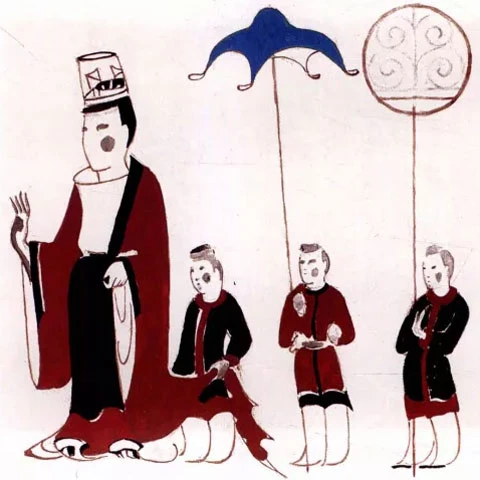
Northern Wei wall paintings in the Mogao Caves at Dunhuang
This kind of costume of the scholars is precisely intended to portray their breakthrough of ritualistic restraint and their attitude of being unrestrained and reckless in life.
The costumes they wore were neither the Shenyi before the Western Han Dynasty, nor the robes after the Eastern Han Dynasty, when the literature recorded that such costumes were called Shanzi. Shanzi is characterized by light and airy, simple and loose, and can best express the spiritual realm of empty and bright.
Women's costumes in the Wei and Jin Dynasties
This period of women's clothing, characterized by: wide, symmetrical lapels, wide sleeves, and in the cuffs, lapels, hem decorated with different colors of the edge, under the striped inter-color skirt, the waist with a piece of silk belt tied.
Hair-style in the Wei and Jin dynasties
Some combed cross-shaped bun on top of the head, called "Shizi bun (十字髻)"; some combed into a variety of hair rings, swaying in the air, called "Lingshe bun (灵蛇髻)", "Feitian bun (飞天髻)".
Because the hair bun is too big and heavy, can not often wear, usually set aside on the shelf. Women from affluent families wear plenty of jewelry on the bun; even women from poor families, they also have to insert some flowers and hairpins.
With the change of times, the costumes also underwent great changes, and the costume style of the Wei and Jin dynasties is still liked by Hanfu enthusiasts to this day. It is not only because of the gorgeous color scheme of the Wei-Jin style Hanfu, but also because of the symbolic meaning of people pursuing a free and easy life.
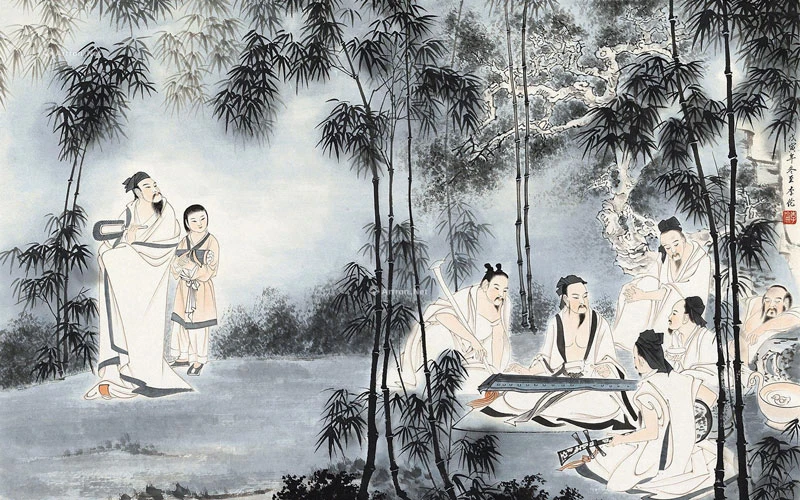
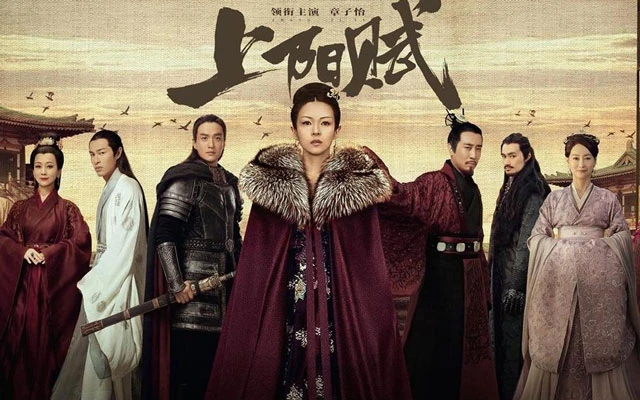
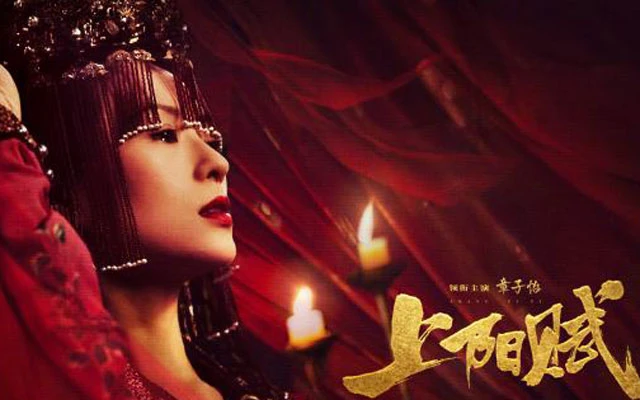
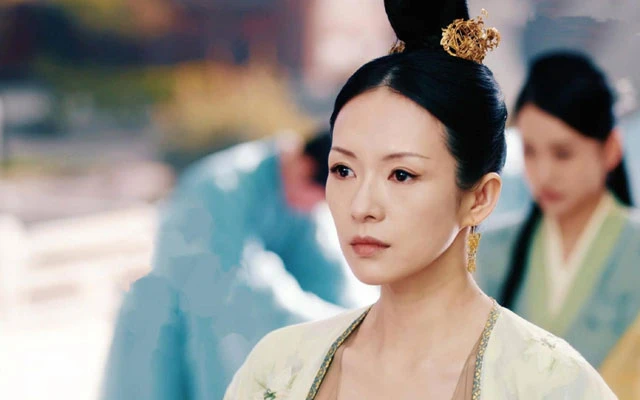
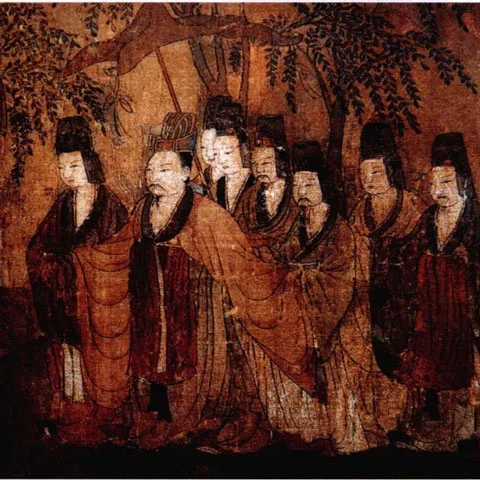
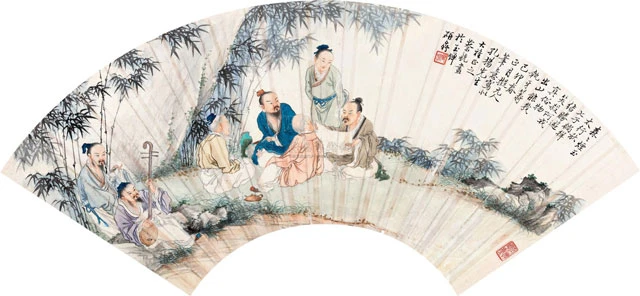
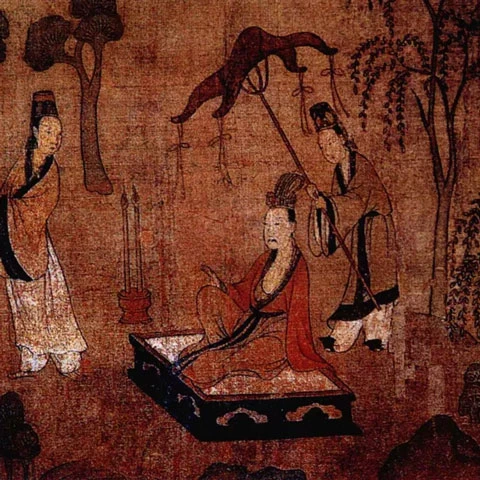
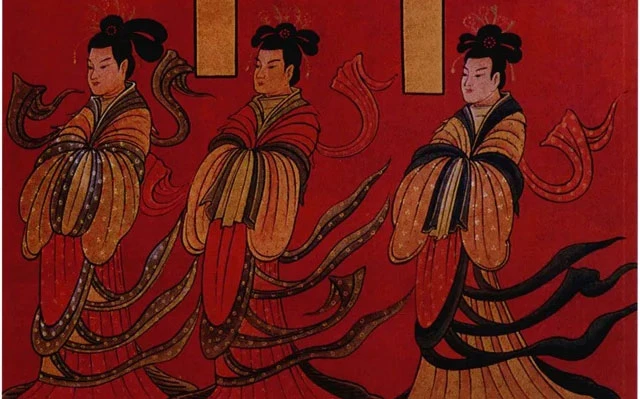
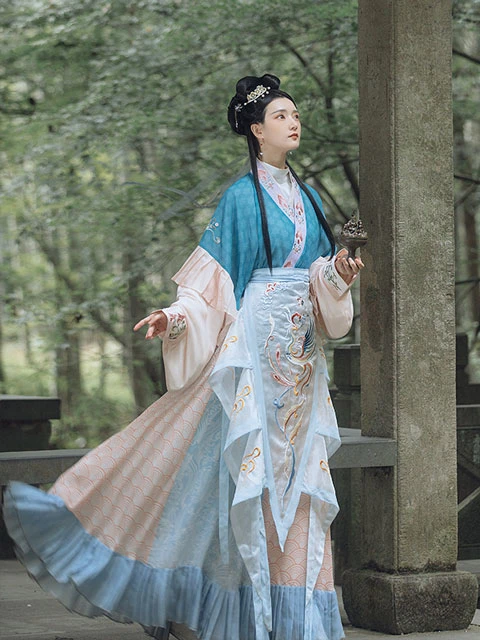
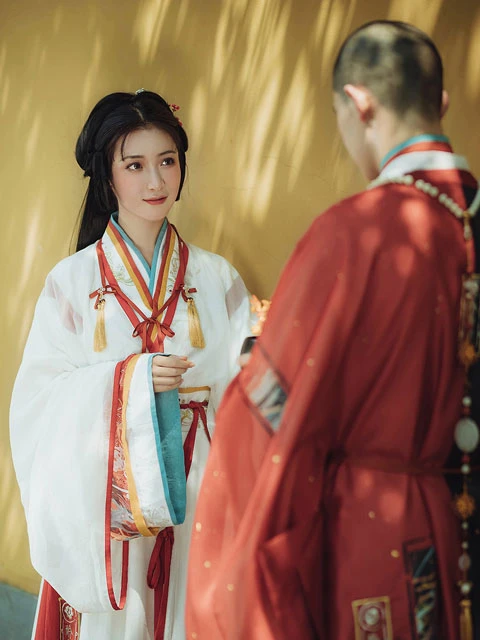
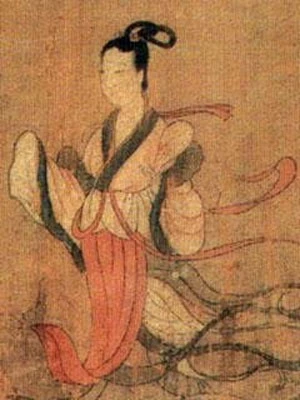

Thanks for this article. I have never understood the style of Wei and Jin dynasties, but now it is clear to me.
wow the actress is so beautiful